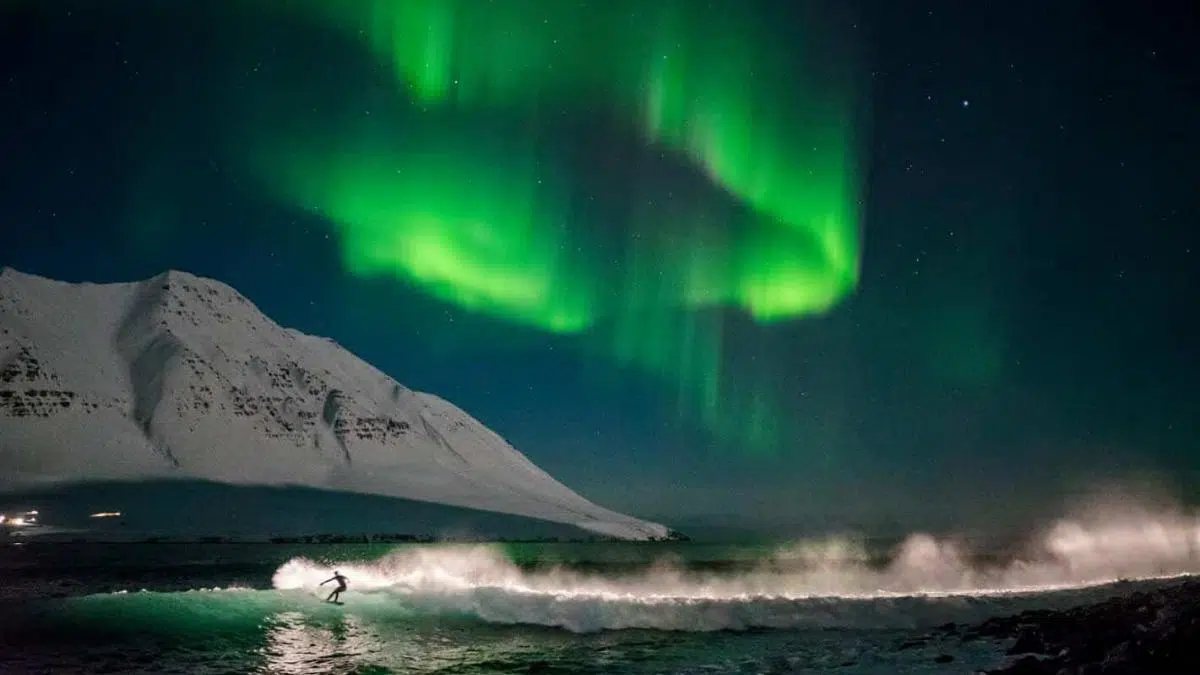Free and exclusive discount codes for hundreds of tours and & travel services in Iceland
Subscribe to instantly receive discount codes for tours, car rental, camper van rental, and outdoor clothing rental. Thank you! ❤️ Jon Heidar, Editor of Stuck in Iceland Travel MagazineOne of the most astonishing Iceland travel films I have seen is the surfing Iceland film Under an Arctic Sky. It tells the story of group of surfers who embark on a quest to find the perfect waves in deep winter. But a massive storm is hitting the sub arctic island. Surfing in Iceland is no game. While we here at Stuck in Iceland absolutely do not endorse driving out in the conditions the group face in the film*, it is a riveting story nevertheless. The visuals are stunning, the surfers perform their dance with the frigid waves with dramatic background of wintry mountains. Like the surfers, many people want to see the northern nights but perhaps under less extreme circumstances. In that case you can book a northern lights tour here in Iceland on this site.
Facing the storm
In the film a group of surfers go to the the frozen shores of Iceland, knowing that the worst storm to hit the country in decades is about to hit. In the darkness and stormy seas, they find perfect waves and surf under the glowing northern lights.
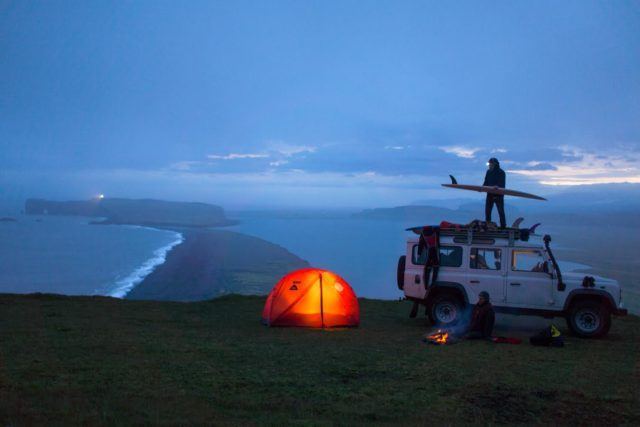
Finding the heart of surfing in Iceland
The undertone of the film is the crisis pioneers feel when their extreme sport becomes too easy and mainstream. So how do you deal with that? You travel to one of Earth’s most inhospitable and extreme places. In this case it is the Westfjords of Iceland during deep winter. You go Iceland surfing. In Iceland they rediscover the fire and fury which is the essence of their passion. But success of catching the perfect waves is far from guaranteed. In Iceland during winter, the weather can turn on a dime and ruin your best laid plans in seconds.
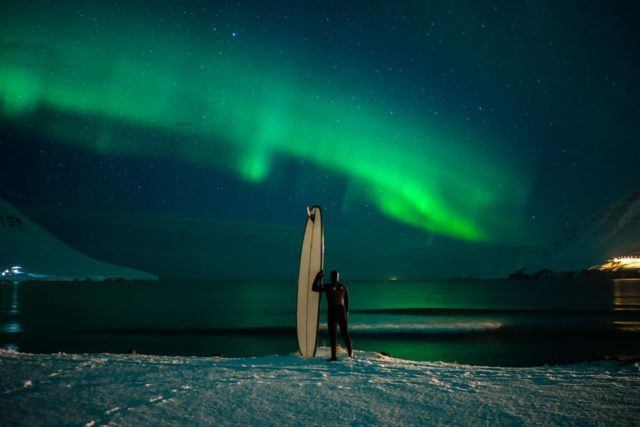
Intense visual impact
The film is directed by by the explorer, photographer, creative director speaker and author Chris Burkard. One of his works is the incredible photo book High Tide: A Surf Odyssey which features photos from the surfing Iceland trip. The incredible visual impact of the film is a true credit to Chris. In the film he is joined by surfers Sam Hammer and Icelanders Heidar Logi, Ingo Olsen and Elli Thor Magnusson.
We were lucky to get a change to interview Chris about the film and his experience of traveling to Iceland.
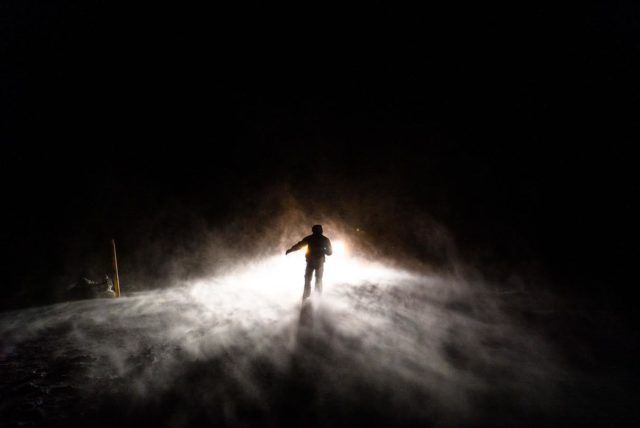
Thank you Chris to agreeing to be interview by Stuck in Iceland, it is an honor for us. When did you first consider Iceland as a surfing destination?
I first learned about Iceland as a surf destination by watching the surf film Castles in the Sky. Iceland surf wasn’t a secret that I found, articles had been written about the area, and people had surfed it before, and this intrigued me. I first traveled to Iceland roughly ten years ago driving around looking for surf. I have been going back ever since.
Is there something unique about Iceland as a location for surfing?
Iceland is unique as a location for surfing because of its cold weather and uncrowded lineups. It certainly is not somewhere most people think of as a surf destination. However, it is these aspects of Iceland that make it such an incredible destination for surfing. When the conditions align there is so much potential for Iceland, and that is one of the reasons it is so exciting to explore new surfing destinations there.
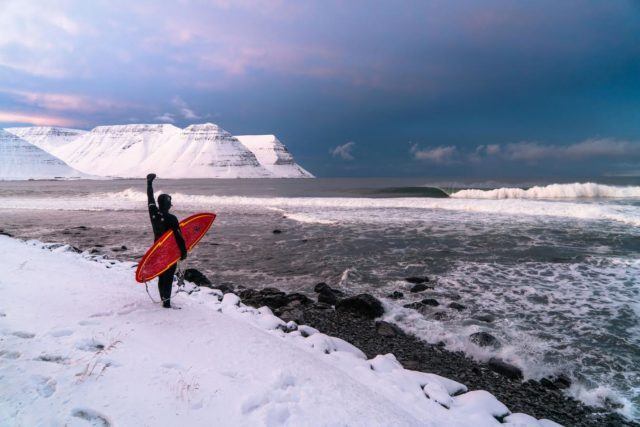
It is a theme in the film that surfing has become too mainstream, do you see more surfers come to places to Iceland to rediscover the extreme side of the sport?
Traveling has been intertwined with surf culture for quite some time now. With wetsuit technology only getting better, I have absolutely seen more and more surfers look to colder and more remote destinations for surf trips.
We am curious to know what gear you used to capture these incredible visuals in the film, can you share that with us?
The main camera I used in the Under an Arctic Sky film was the Sony A7SII. With capturing northern light visuals, and with the lack of sunlight, it is important to have a camera that has great low light performance and allows me to push the ISO. Since the A7SII is an excellent low-light camera, it worked wonderfully for the film. Otherwise, the Sony a7rII has been my workhorse, and I am transitioning to using the new Sony A7rIII.
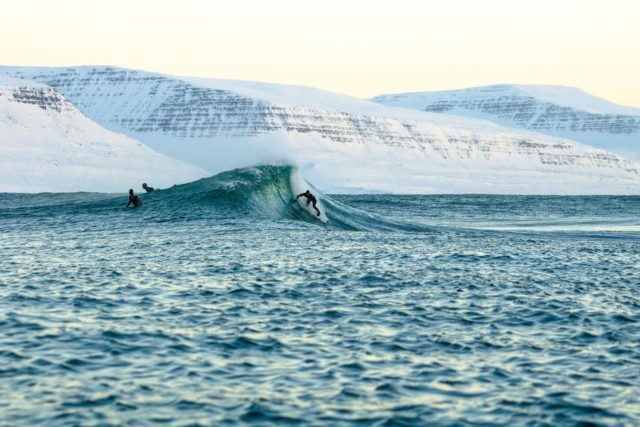
Can you share some spots that are great for surfing Iceland? What regions are the best in your opinion?
We never would have scored the waves we did without the help of the guide team Arctic Surfers. The best thing I can do is point people their direction simply because they know the waves, swell directions, spots, and conditions better than anyone.
What advice would give those who are coming to Iceland to surf for the first time?
I would say to make sure you have the right equipment. The weather in Iceland is brutal, and it is important to be prepared for changing weather conditions both in and outside of the water. This goes for choosing the correct clothing as well as having the correct wetsuits and vehicle.
Have you visited Iceland as a “regular traveler” and if so, can you tell us about that trip?
I have actually never traveled to Iceland off assignment. I have had time between trips where I have driven around exploring with friends and family, but what consistently brings me back to Iceland is the inspiration I gain from the landscape, surf, and what this brings to my work.
*If the authorities warn you about a storm in the middle of winter and say you should not travel, you should not. Unless you want to gamble with your life and risk the lives of rescue personnel who need to save your behind.


